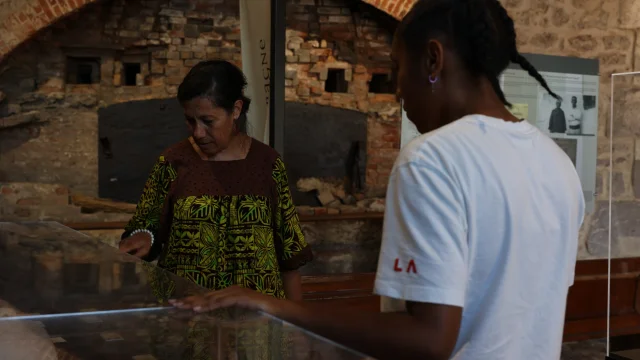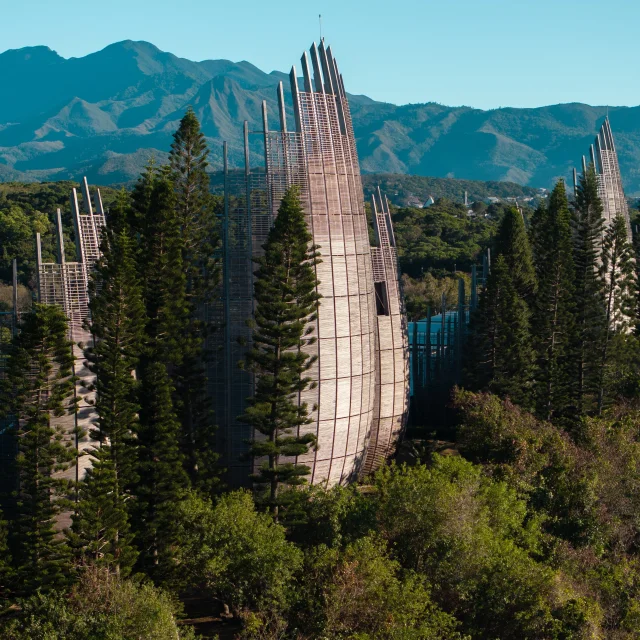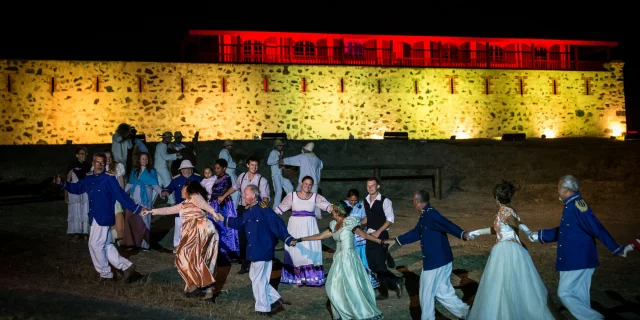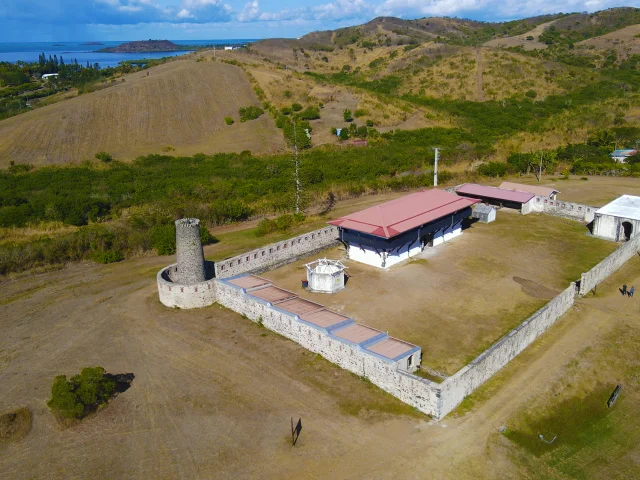 Site Historique De Lile Nou Charlotte Bertonneau 8123
Site Historique De Lile Nou Charlotte Bertonneau 8123 Site Historique De Lile Nou Charlotte Bertonneau 8123
Site Historique De Lile Nou Charlotte Bertonneau 8123 Charlotte Bertonneau Maritime Museum 4718
Charlotte Bertonneau Maritime Museum 4718 Site Historique De Lile Nou Charlotte Bertonneau 8123
Site Historique De Lile Nou Charlotte Bertonneau 8123A capital destination, Nouméa boasts not only several must-see museums, including the Centre Culturel Tjibaou, but also historic buildings, theaters and numerous cultural attractions. The city’s annual program is ambitious: there’s always an exhibition, show or open house to explore New Caledonia’s heritage. To learn more about the city’s history and take advantage of its cultural offerings, here are just a few of the things to do in Nouméa:
 Manager
Manager Place Des Cocotiers Charlotte Bertonneau 0294
Place Des Cocotiers Charlotte Bertonneau 0294 default
defaultNew Caledonia’s sunshine is exceptional, so it’s sometimes difficult to lock yourself away in a museum for several hours. No problem: in the South Province, you can combine the discovery of our historical heritage with a walk in the great outdoors! The Centre Culturel Tjibaou in Nouméa is a prime example. Admire the unique architecture of the museum’s huts while discovering the symbolism of the plants on the “Kanak path”, and you’re in for an instructive and relaxing experience! In Moindou, the exterior remains of Fort Teremba are set in the middle of a huge plot of land overlooking the turquoise lagoon. A picnic after your visit is just what you need! But these aren’t the only examples of open-air museums: the visit to the Plateau Mine in Thio followed by a tribal meal is well worth the trip across the Central Range!
The communes of the South Province program exciting cultural events all year round for locals and visiting visitors alike. In September, during Heritage Month, monuments and museums organize shows, workshops and guided tours. You can also discover museums in an unusual way during Museum Night, or take part in an Escape Game. This life-size escape game has already delighted a number of participants at Fort Teremba, the former Magnin Clinic and the Musée Maritime. There’s no doubt that after this experience, you’ll never look at monuments in the same way again! Finally, several sites come to life during discovery weekends, such as the Château Hagen and the Higginson House.
 Festival Son et Lumière au Fort Teremba - Moindou - Nouvelle-Calédonie
Festival Son et Lumière au Fort Teremba - Moindou - Nouvelle-CalédonieWhat a pleasure to come face to face with an old colonial building, an ancient bakery, the ruins of a prison, an ancestral sculpture! Well, that’s what awaits you in many of the communes of the South Province! In Nouméa, La Foa, Bourail, Île des Pins, Prony… Keep your eyes open as you stroll around, and you’ll notice just how much of New Caledonia’s historical heritage is still present in the towns and villages. Discoveries not to be missed include:
 default
default Fort Teremba Drone2
Fort Teremba Drone2 default
defaultSpending a day with a tribe, attending local festivals and fairs, sampling local produce: this is a great way to share in the Caledonian art of living. The locals welcome you with open arms, and are never stingy when it comes to sharing their traditions and customs. Want to learn more about Kanak culture? What could be better than sharing a moment of life with a tribe? Take a walk in the wilderness, and learn about the history of the elders and the power of medicinal plants. You can also get up close to the local art of living at village festivals: take the opportunity to taste bougna, the traditional Kanak dish.
Change of scenery on the west coast, where the art of living of the bush people will surprise you. Visit a local fair, such as Foire de Bourail or the Fête du Bœuf: rodeo, deer tasting and cowboy hats are all on the menu.
 Marche De Yate Charlotte Bertonneau 5338
Marche De Yate Charlotte Bertonneau 5338In New Caledonia, many sites are sacred, even taboo. Prohibited from entering, associated rites or customs… Are you wondering what the meaning of these rules is? The best way to understand Kanak values is to share a moment with the inhabitants of a tribe. The oral transmission of myths and traditions is an essential part of Kanak culture. In the Bourail region, for example, you can discover the Table of Sacrifices at the Borégahou tribe, in the company of Mathias, from the Djoumouen clan. On the program: discovery of the region’s Kanak history and the table of human sacrifices. You’ll need to bring your own customary items. Your guide will explain the rite of custom, before telling you the story of the warriors from whom his clan descends. Feel free to ask him any questions you may have about rituals, currency and Kanak history!
Petroglyphs, pottery… New Caledonia has long been inhabited. Some archaeological remains can be seen today, notably at Thio Mission where petroglyphs are engraved on a dark rock, but also at the Rivière Bleue Provincial Park, in the Dumbéa valley, at Katiramona, on the sentier du Pic N’Ga or at the Musée de Bourail.
Similarly, as you travel through the Domaine de Déva, you’ll come close to the sacred site of the Vallée Tabou de Deva. Remains of tarodières, yam fields and hut sites can be found here.
But, the place is also a symbol of the Kanak revolt of 1878-1879 and a sacred site. The 937-hectare area has been classified as a historic site and monument by the South Province since 2011.
The Tabou Valley was occupied from around the 5th to the 18th century A.D.
.
Bealo Gony, ethnologist, Institut d’archéologie de la Nouvelle-Calédonie et du Pacifique (IANCP)